The Tannenberg Memorial - 100th anniversary of the battle of Tannenberg 1914 - 2014
The Tannenberg Memorial - 100th anniversary of the battle of Tannenberg 1914 - 2014
Advertisement
African people and other colonial "citizen" - World War I casualties (incl. other colonies of France & Britain, Germany and Belgium
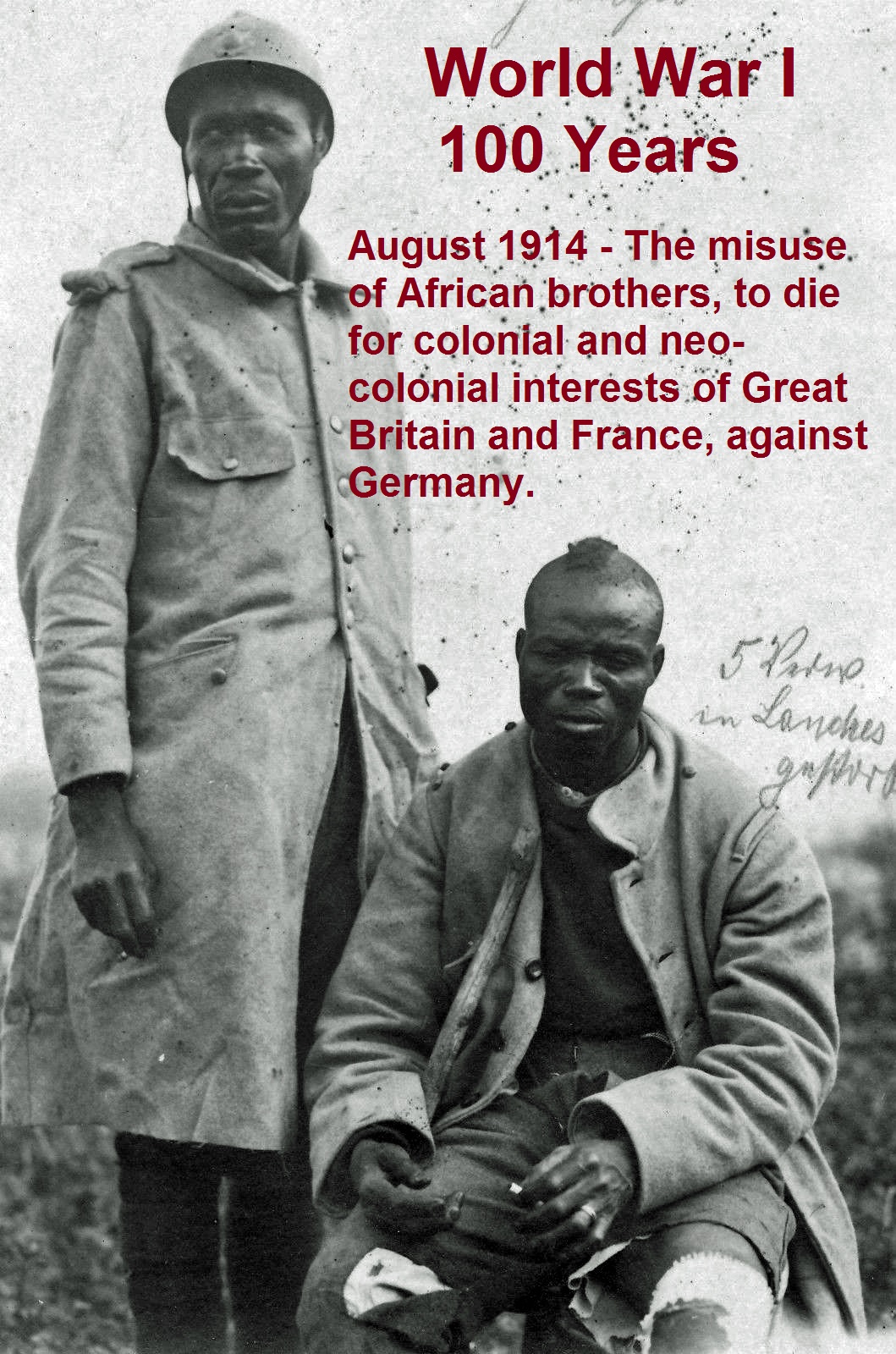
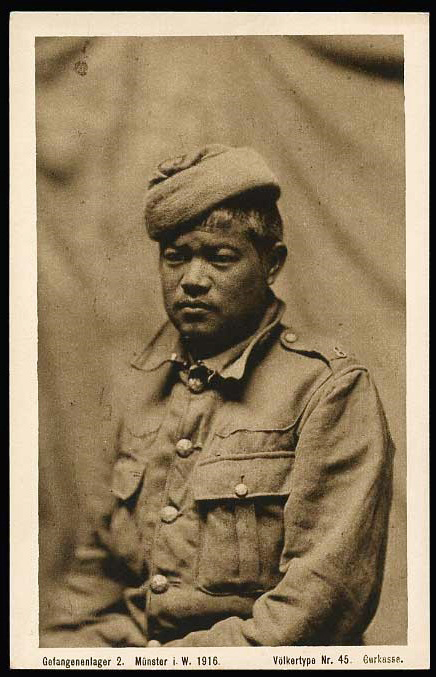
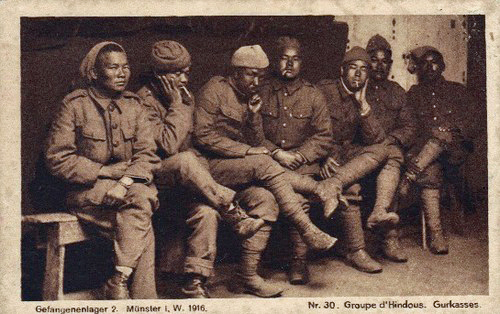
African & other colonial people - World War I casualties.
(incl. colonies of
France & Britain, Germany and Belgium)
The following
estimates of deaths, within contemporary borders, during World War
I were made by a Russian journalist Vadim Erlikman in a 2004
handbook of human losses in the 20th century. Erlikman's estimates
are based on sources published in the Soviet Union and
Russia.
History Of The Tannenberg Memorial commemorated fallen German soldiers of the second Battle of Tannenberg in 1914, which was named after the medieval battle of the same name. The victorious German commander, Paul von Hindenburg, became a national hero, and was later elected Reichspräsident.Dedicated by Hindenburg on the 10th anniversary of the battle of Tannenberg in 1924 . >>> Read More About >>>
Some of the first clashes of the war involved British, French, and German colonial forces in Africa. On 6–7 August, French and British troops invaded the German protectorate ofTogoland and Kamerun. On 10 August, German forces in South-West Africa attacked South Africa; sporadic and fierce fighting continued for the rest of the war. The German colonial forces in German East Africa, led by Colonel Paul von Lettow-Vorbeck, fought a guerrilla warfare campaign during World War I and only surrendered two weeks after the armistice took effect in Europe.
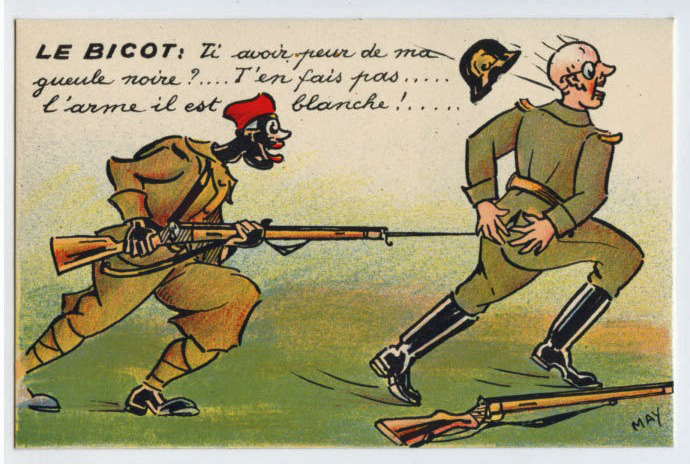
France
French casualty figures up until
June 1, 1919 include 35,200 French Colonial Forces, 35,900 "north
Africans" and 4,600 French Foreign Legion...
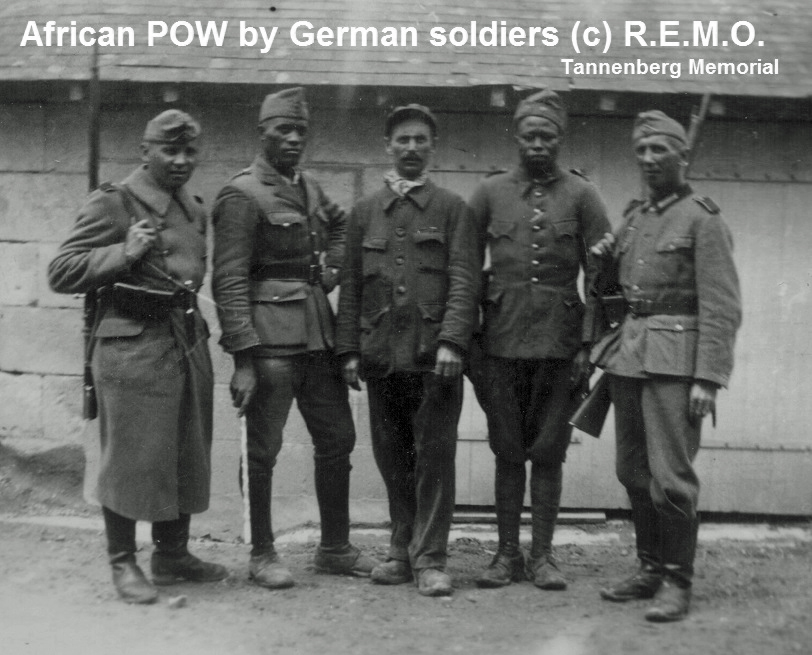
Postwar counting - World War 1
African people - World War
I casualties
French
Colonies
Algeria (1914
known as French Algeria): 26,000
Vietnam (1914
known as French Indochina): 12,000
Mali (1914 part
of French West Africa): 60,000
Morocco (1914
known as the French protectorate of Morocco): 8,000
Senegal (1914
part of French West Africa): 36,000
Guinea (1914
part of French West Africa): 14,500
Madagascar:
2,500 military
Benin (1914
part of French West Africa): 27,000
Burkina Faso
(1914 part of French West Africa): 17,000
Republic of the
Congo (1914 part of French Equatorial Africa):32,000
Ivory Coast
(1914 part of French West Africa): 12,000
Tunisia (1914
known as French Tunisia): 2,000
Chad (1914 part
of French Equatorial Africa): 1,500
Central African
Republic (1914 known as French Oubangui-Chari): 1,000
Niger (1914
part of French West Africa): 1,000
Gabon (1914
part of French Equatorial Africa): 10,500
British
colonies
Britain
recruited Indian, Chinese, native South African, Egyptian and other
overseas labour to provide logistical support in the combat
theatres. Included with British casualties in East Africa are the
deaths of 44,911 recruited labourers.
The CWGC
reports that nearly 2,000 workers from the Chinese Labour Corps are
buried with British war dead in France.
The following
estimates of British Empire colonial military deaths, within
contemporary borders, during World War I were made by a Russian
journalist Vadim Erlikman in a 2004 handbook of human losses in the
20th century. Erlikman's estimates are based on sources published
in the Soviet Union.
Ghana
(1914 known as the Gold Coast): 16,200
Kenya
(1914 known as British East Africa): 32,000
Malawi
(1914 known as Nyasaland): 3,000
Nigeria
(1914 part of British West Africa): 85,000
Sierra
Leone (1914 part of British West Africa):
1,000
Uganda
(1914 known as the Uganda Protectorate):
1,500
Zambia
(1914 known as Northern Rhodesia): 2,000
Zimbabwe (1914
known as Southern Rhodesia): 5,716 persons of European
origin served in the war, 700 were killed, died of wounds or other
causes. In Rhodesian units,127 were killed, 24 died of wounds, 101
died of disease or other causes and 294 were wounded. 31
Africans were killed in action, 142 died of other causes and 116
were wounded.
The conflict in
East Africa caused enormous civilian casualties. The Oxford History
of World War One notes that:
"In
east and central Africa the harshness of the war resulted in acute
shortages of food with famine in some areas, a weakening of
populations, and epidemic diseases which killed hundreds of
thousands of people and also cattle."
The following
estimates of civilian deaths in East Africa during World War I were
made by a Russian journalist in a 2004 handbook of human losses in
the 20th century:
Kenya 30,000; Tanzania 100,000; Mozambique 50,000; Rwanda 15,000; Burundi 20,000; and the Belgian Congo 150,000.
The
military casualties of the UK, France, Germany, Belgium, and
Portugal include Africans who served with their armed
forces, the details are noted in the list of the various
colonies.
Colonies
of Belgium
Belgian government
figures for military losses in Europe were 40,367 (26,338 killed,
died of wounds or accidents and 14,029 died of disease or missing).
In Africa: 2,620 soldiers were killed and 15,650 porters died. The
combined total for Europe and Africa is 58,63
UK and the British
colonies
The UK War Office put French dead,killed and missing at 1,385,300
dead and missing, including 58,000 colonial soldiers up until Nov.
1, 1918.
The Commonwealth War Graves Commission figure for Indian war dead
is 74,191. The Commonwealth War Graves Commission figure for
South Africa war dead is 9,516
German
colonies
The estimates of deaths, within contemporary borders, during World
War I were made by a Russian journalist Vadim Erlikman.
Tanzania
(1914 part of German East Africa): 50,000 (*mainly
African, due British attacks)
Namibia (1914 known as German South-West Africa):
1,000 (*mainly Germans)
Cameroon (1914 known as Kamerun): 5,000 military and
50,000 (*Mainly African / Cameroon people, due French and
British attacks)
Togo (1914 known as German Togoland): 2,000
(mainly African, civilians, due French and British attacs) Germany
had just 600 Togolese Police and about 30 German soldiers/officers
stationd in Togo)
Rwanda (1914 part of German East Africa)
15,000 (*Mainly African / civilians, fewer Germans,
due French and British attacks)
German Empire
(1918)
In 1934 the official German war history listed 2,037,000 military
dead. Confirmed dead from all causes 1,936,897 (Army 1,900,876,
Navy 34,836 ,Colonial troops 1,185); wounded 4,215,662; prisoners
and missing 974,977 of which an estimated 100,000 were presumed
dead. The German Board of Public Health in December 1918 maintained
that 763,000 German civilians died from malnutrition and disease
caused by the blockade up until the end of December 1918. A German
academic study in 1928 put the death toll at
424,000.
A study
sponsored by the Carnegie Endowment for International Peace in 1940
estimated the German civilian death toll due to the war at
over 600,000...
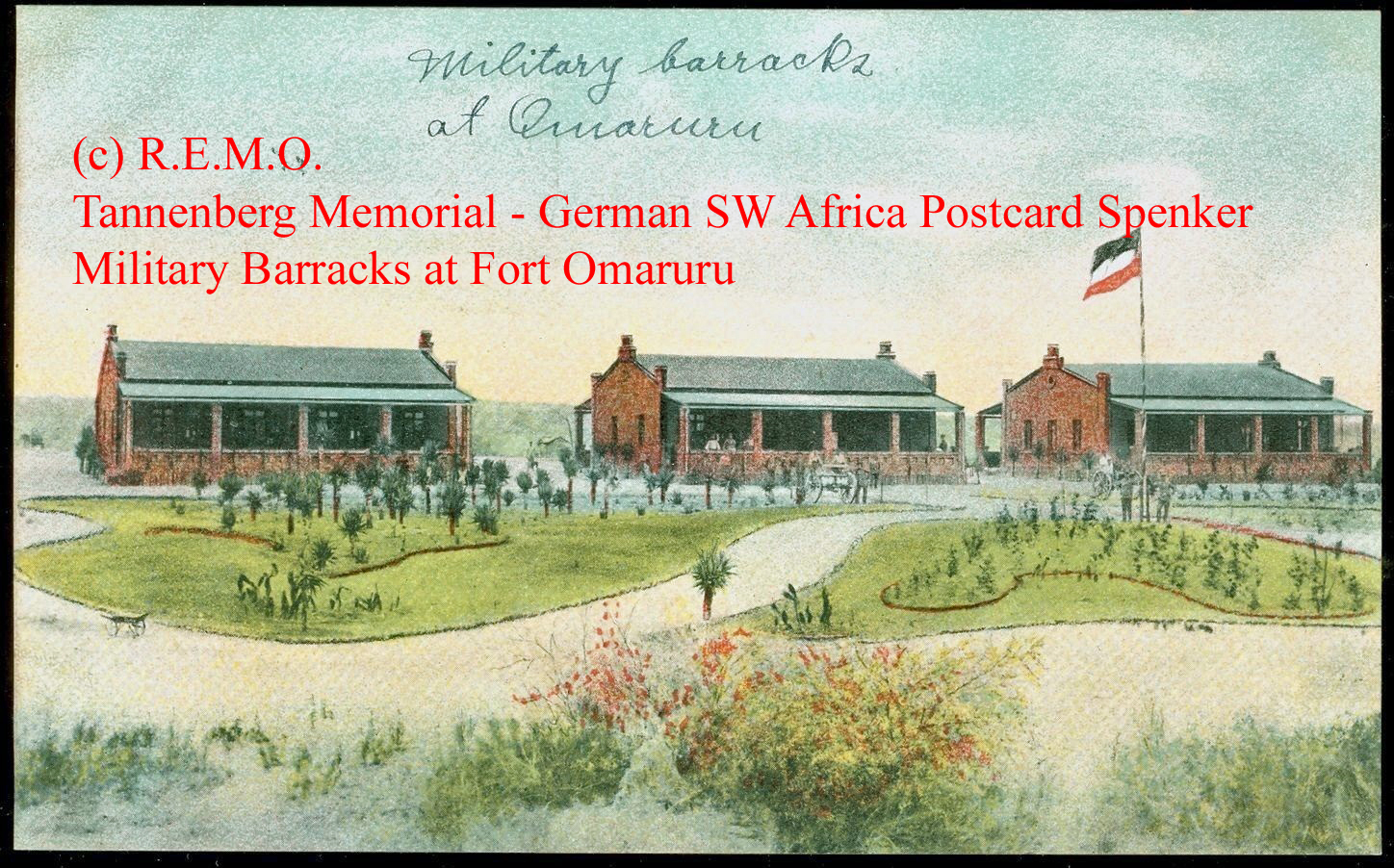
Rare postcard, showing the German Military Barracks at Fort Omaruru, South West Africa (Namibia)
Contrary to British fears of a revolt in India, the outbreak of the war saw an unprecedented outpouring of loyalty and goodwill towards Britain. Indian political leaders from the Indian National Congress and other groups were eager to support the British war effort, since they believed that strong support for the war effort would further the cause of Indian Home Rule. The Indian Army in fact outnumbered the British Army at the beginning of the war; about 1.3 million Indian soldiers and labourers served in Europe, Africa, and the Middle East, while both the central government and the princely states sent large supplies of food, money, and ammunition. In all, 140,000 men served on the Western Front and nearly 700,000 in the Middle East. Casualties of Indian soldiers totalled 47,746 killed and 65,126 wounded during World War I, mainly on the Western Front against Germany). The suffering engendered by the war, as well as the failure of the British government to grant self-government to India after the end of hostilities, bred disillusionment and fuelled the campaign for full independence that would be led by Mohandas Karamchand Gandhi and others.
The Hindu–German Independence Conspiracy was a series of plans formulated between 1914 and 1917 to initiate a Pan-Indian rebellion against the British Raj during World War I considering that, Britain's difficulty was India's 'opportunity'
The
conspiracy was drawn up at the beginning of the war, and was
extensively supported by
the Irish republican
movement, (Ireland was occupied by Britain, and
bacame partly independend 1922 *not Northern Ireland)
the German Foreign Office, and the German
consulate in San Francisco, receiving some help
from Ottoman Turkey as well. The most
prominent plan attempted to foment unrest and trigger a Pan-Indian
mutiny in the British Indian
Army from Punjab to Singapore.
This plot was planned to be executed in February 1915 with the aim
of overthrowing the Raj from the Indian
subcontinent. The February mutiny was
ultimately thwarted when British intelligence infiltrated the
Ghadarite movement and arrested key figures. Mutinies in smaller
units and garrisons within India were also
crushed.
The Indo-Irish-German alliance and the conspiracy were the target of a worldwide British intelligence effort, which was successful in preventing further attempts. American intelligence agencies arrested key figures in the aftermath of the Annie Larsen affair in 1917. The conspiracy resulted in the Lahore conspiracy case trials in India as well as the Hindu German Conspiracy Trial—at the time the longest and most expensive trial ever held in the United States.
With the onset of World War I, an Indian
revolutionary group called the Berlin
Committee (later called the Indian
Independence Committee) was formed in Germany. Its chief
architects were C. R. Pillai and V. N.
Chatterjee.The committee drew members from Indian students
and erstwhile members of the India House including Abhinash
Bhattacharya, Dr. Abdul Hafiz, Padmanabhan Pillai, A. R.
Pillai, M. P. T. Acharya and Gopal Paranjape.
Germany had earlier opened the Intelligence Bureau for the
East headed by archaeologist and historian Max von
Oppenheim. Oppenheim and Arthur Zimmermann, the State
Secretary for Foreign Affairs of the German Empire, actively
supported the Berlin committee, which had links with Jatin
Mukherjee— a Jugantar Party member and at the time one of
the leading revolutionary figures in
Bengal. The
office of the 25-member committee at No.38 Wielandstrasse was
accorded full embassy
status.
This series of events was consequential to the Indian independence movement. Though largely subdued by the end of World War I, it came to be a major factor in reforming the Raj's Indian policy. Similar efforts were made during World War II in Germany, Italy, and in Southeast Asia which saw the formations of Indische Legion, Battaglione Azad Hindoustan and Indian National Army respectively, paving the way to India`s independence!
Postwar - The Jallianwala Bagh massacre, also known as the Amritsar massacre, was a seminal event in the British rule of India. On 13 April 1919, a crowd of non-violent protesters, along with Baishakhi pilgrims, had gathered in the Jallianwala Bagh garden in Amritsar,Punjab to protest the arrest of two leaders despite a curfew which had been recently declared. On the orders of Brigadier-General Reginald Dyer, the army fired on the crowd for ten minutes, directing their bullets largely towards the few open gates through which people were trying to run out. The dead numbered 1,000, or possibly more. This "brutality stunned the entire nation", resulting in a "wrenching loss of faith" of the general public in the intentions of Britain. The ineffective inquiry and the initial accolades for Dyer by the House of Lords fuelled widespread anger, leading to the Non-cooperation Movement of 1920–22...
1930 - The massacre at the Qissa Khawani Bazaar (the Storytellers Market) in Peshawar, British India (modern day Pakistan) on 23 April 1930 was one of the defining moments in the non-violent struggle of the Indian independence movement. It was the first major confrontation between British troops and non-violent demonstrators in the then peaceful city—some estimates at the time put the death toll from the shooting at nearly 400 dead. The gunning down of unarmed people triggered protests across the India and catapulted the newly formed Khudai Khidmatgar movement onto the National scene...
Part of the information (c) Wikipedia
Neue Webseite ist in Arbeit: tannenberg.eventpicture.co.uk